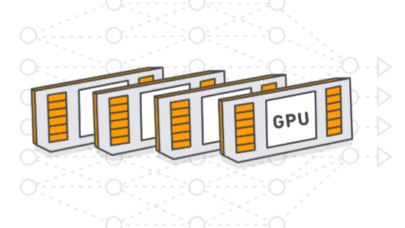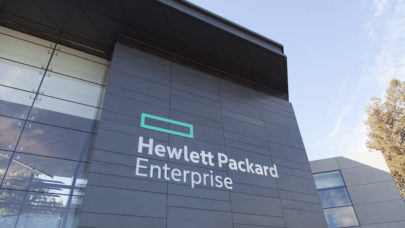
Amazon Debuts New AMD-based GPU Instances for Graphics Acceleration
September 12, 2017
Last week Amazon Web Services (AWS) streaming service, AppStream 2.0, introduced a new GPU instance called Graphics Design intended to accelerate graphics. The Read more…

Nvidia, Baidu Expand AI Partnership
July 5, 2017
Today at its developer conference in Beijing, Baidu announced a broadening of its AI partnership with Nvidia, including plans to bring Nvidia’s recently annou Read more…

HPE Expands HPC Lineup; Targets Deep Learning, Lustre, and FS
April 4, 2016
Hewlett Packard Enterprise (HPE) for the second straight week introduced new server products with today’s launches aimed at high performance computing. The ce Read more…

Titan Helps Researchers Explore Explosive Star Scenarios
December 8, 2015
A team led by Michael Zingale of Stony Brook University is exploring the physics of Type Ia supernovas using the Titan supercomputer at the US Department of Ene Read more…

Think Fast: IBM Talks Acceleration in HPC and the Enterprise
November 16, 2015
At SC15 today, IBM provided a glimpse of its broadening vision for accelerator-assisted computing with announcements around Watson, a strategic alliance with FP Read more…

Benchmarking Effort Declares Tie Between Cloud and Native Hardware
February 3, 2011
A recent effort led by Cycle Computing based on the SHOC benchmark revealed equal performance between GPU-accelerated cloud and native hardware. Read more…

NVIDIA’s Senior Solution Architect, Dale Southard on GPU Clouds for HPC
December 8, 2010
This week we talked to Dale Southard of NVIDIA about the challenges and benefits of providing access to GPU resources in a cloud enviornment. We touch upon issues related to performance, CUDA, future directions, and Dale's own experiences in HPC and how they carried over to his work with GPU clouds. Read more…

MATLAB Adds GPGPU Support
September 20, 2010
MATLAB users with a taste for GPU computing now have a perfect reason to move up to the latest version. Release R2010b adds native GPGPU support that allows user to harness NVIDIA graphics processors for engineering and scientific computing. The new capability is provided within the Parallel Computing Toolbox and Distributed Computing Server. Read more…

- Click Here for More Headlines

Whitepaper
Transforming Industrial and Automotive Manufacturing
In this era, expansion in digital infrastructure capacity is inevitable. Parallel to this, climate change consciousness is also rising, making sustainability a mandatory part of the organization’s functioning. As computing workloads such as AI and HPC continue to surge, so does the energy consumption, posing environmental woes. IT departments within organizations have a crucial role in combating this challenge. They can significantly drive sustainable practices by influencing newer technologies and process adoption that aid in mitigating the effects of climate change.
While buying more sustainable IT solutions is an option, partnering with IT solutions providers, such and Lenovo and Intel, who are committed to sustainability and aiding customers in executing sustainability strategies is likely to be more impactful.
Learn how Lenovo and Intel, through their partnership, are strongly positioned to address this need with their innovations driving energy efficiency and environmental stewardship.
Download Now
Sponsored by Lenovo
Whitepaper
How Direct Liquid Cooling Improves Data Center Energy Efficiency
Data centers are experiencing increasing power consumption, space constraints and cooling demands due to the unprecedented computing power required by today’s chips and servers. HVAC cooling systems consume approximately 40% of a data center’s electricity. These systems traditionally use air conditioning, air handling and fans to cool the data center facility and IT equipment, ultimately resulting in high energy consumption and high carbon emissions. Data centers are moving to direct liquid cooled (DLC) systems to improve cooling efficiency thus lowering their PUE, operating expenses (OPEX) and carbon footprint.
This paper describes how CoolIT Systems (CoolIT) meets the need for improved energy efficiency in data centers and includes case studies that show how CoolIT’s DLC solutions improve energy efficiency, increase rack density, lower OPEX, and enable sustainability programs. CoolIT is the global market and innovation leader in scalable DLC solutions for the world’s most demanding computing environments. CoolIT’s end-to-end solutions meet the rising demand in cooling and the rising demand for energy efficiency.
Download Now
Sponsored by CoolIT
Advanced Scale Career Development & Workforce Enhancement Center
Featured Advanced Scale Jobs:
HPCwire Resource Library
HPCwire Product Showcase
© 2024 HPCwire. All Rights Reserved. A Tabor Communications Publication
HPCwire is a registered trademark of Tabor Communications, Inc. Use of this site is governed by our Terms of Use and Privacy Policy.
Reproduction in whole or in part in any form or medium without express written permission of Tabor Communications, Inc. is prohibited.
























